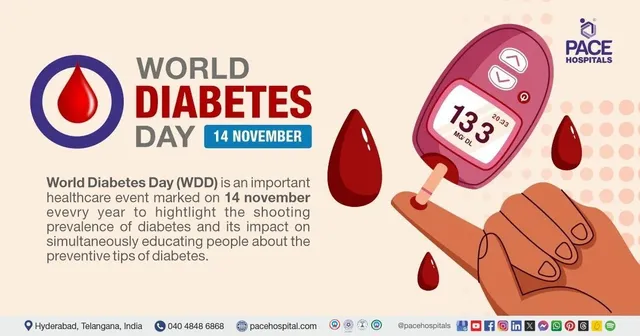By: Surjit Singh Flora
 (Samajweekly) World Diabetes Day, observed every year on November 14, reminds us of the global and local impact of diabetes and the importance of preventive measures and effective management.
(Samajweekly) World Diabetes Day, observed every year on November 14, reminds us of the global and local impact of diabetes and the importance of preventive measures and effective management.Around the world, there are 537 million adults aged 20 to 79 living with diabetes, which equates to 1 in 10 individuals. The projection indicates that this figure will increase to 643 million by 2030 and reach 783 million by 2045. More than 75% of adults with diabetes reside in low- and middle-income nations.
In India, it is estimated that 77 million individuals over the age of 18 are living with diabetes (type 2), while nearly 25 million are classified as prediabetics, placing them at a heightened risk of developing diabetes in the near future.
By 2025, three-quarters of the 300 million individuals worldwide who have diabetes will live in non-industrialized nations, with over a third of them in China and India alone. Diabetes is a global public health issue that is currently becoming a pandemic.
Over half of individuals do not know their diabetic status, resulting in health issues if not identified and addressed promptly. Individuals with diabetes face a two- to three-fold heightened risk of experiencing heart attacks and strokes. The combination of reduced blood flow and neuropathy (nerve damage) in the feet heightens the risk of foot ulcers, infections, and ultimately, the necessity for limb amputation. Diabetic retinopathy is a significant contributor to blindness, arising from prolonged damage to the small blood vessels in the retina. Diabetes ranks as one of the primary contributors to kidney failure.
In India, where cases of diabetes are steadily rising, many people are looking for practical ways to control their blood sugar levels. One of the simplest and most effective ways to achieve this is through diet, particularly by choosing low-glycemic foods. These foods release sugar slowly into the bloodstream, helping prevent sharp blood sugar spikes and keeping energy levels steady throughout the day.
In India, low-glycemic foods are surprisingly accessible, often rooted in traditional diets that include items like green bananas, sweet potatoes, millet, and local vegetables. Green bananas, for instance, are high in resistant starch, a type of fiber that slows digestion and sugar release. They’re widely available and simple to prepare, whether boiled or stewed. Sweet potatoes are another excellent choice, offering a naturally sweet flavor without the sharp increase in blood sugar associated with refined carbohydrates.
Boiling or roasting them as part of a meal provides a satisfying, nutrient-dense option that supports blood sugar stability. Millet is also a fantastic addition to a diabetes-friendly diet. Millet is not only rich in fiber but also gluten-free and simple to digest. When cooked into porridge or added to other dishes, millet can keep blood sugar stable while supplying essential nutrients like magnesium, which plays a role in insulin regulation. Local vegetables, such as managed nightshade and terete (amaranth greens), are high in fiber and low in carbohydrates, which makes them great for blood sugar management. Including these greens in meals not only adds variety but also improves the diet’s nutritional profile with iron, vitamins, and antioxidants.
The glycemic index (GI) of some fruits is higher than that of others; nevertheless, the GI of berries, apples, pears, and peaches is moderate, and they include beneficial vitamins and antioxidants.
The consumption of non-starchy vegetables, which are abundant in minerals and fiber, helps reduce spikes in blood sugar levels and promotes feelings of fullness. Among the vegetables that fall under this category are carrots, peppers, broccoli, cauliflower, zucchini, and leafy greens.
For a well-rounded approach, balancing low-glycemic carbohydrates with protein and healthy fats is essential. Adding beans, lentils, or small portions of lean meats to meals can slow the absorption of sugars even further, promoting better blood sugar control. Healthy fats from sources such as avocados and nuts can also be part of a balanced, diabetes-friendly meal. Avocados, for instance, contain monounsaturated fats that help lower harmful cholesterol levels and improve heart health, which is especially important for people with diabetes.
Also, utilize herbs and spices like cinnamon, turmeric, ginger, and garlic to enhance the flavor profile of your dishes while avoiding the addition of excess salt or sugar. Certain herbs and spices may exhibit advantageous properties regarding the regulation of blood sugar levels.
It is essential to maintain proper hydration by consuming an adequate amount of water consistently throughout the day. Water plays a crucial role in the regulation of blood sugar levels, facilitates the digestive process, and contributes to overall well-being.
As we commemorate World Diabetes Day, it’s crucial to remember that dietary changes don’t have to be costly or complicated. Many of the foods that best support blood sugar control are affordable, locally sourced, and easy to prepare. By choosing these options, we can take small but significant steps toward managing or preventing diabetes while celebrating the nutritional richness of local foods. Embracing these choices can contribute to a healthier future for both individuals and communities across the country.










